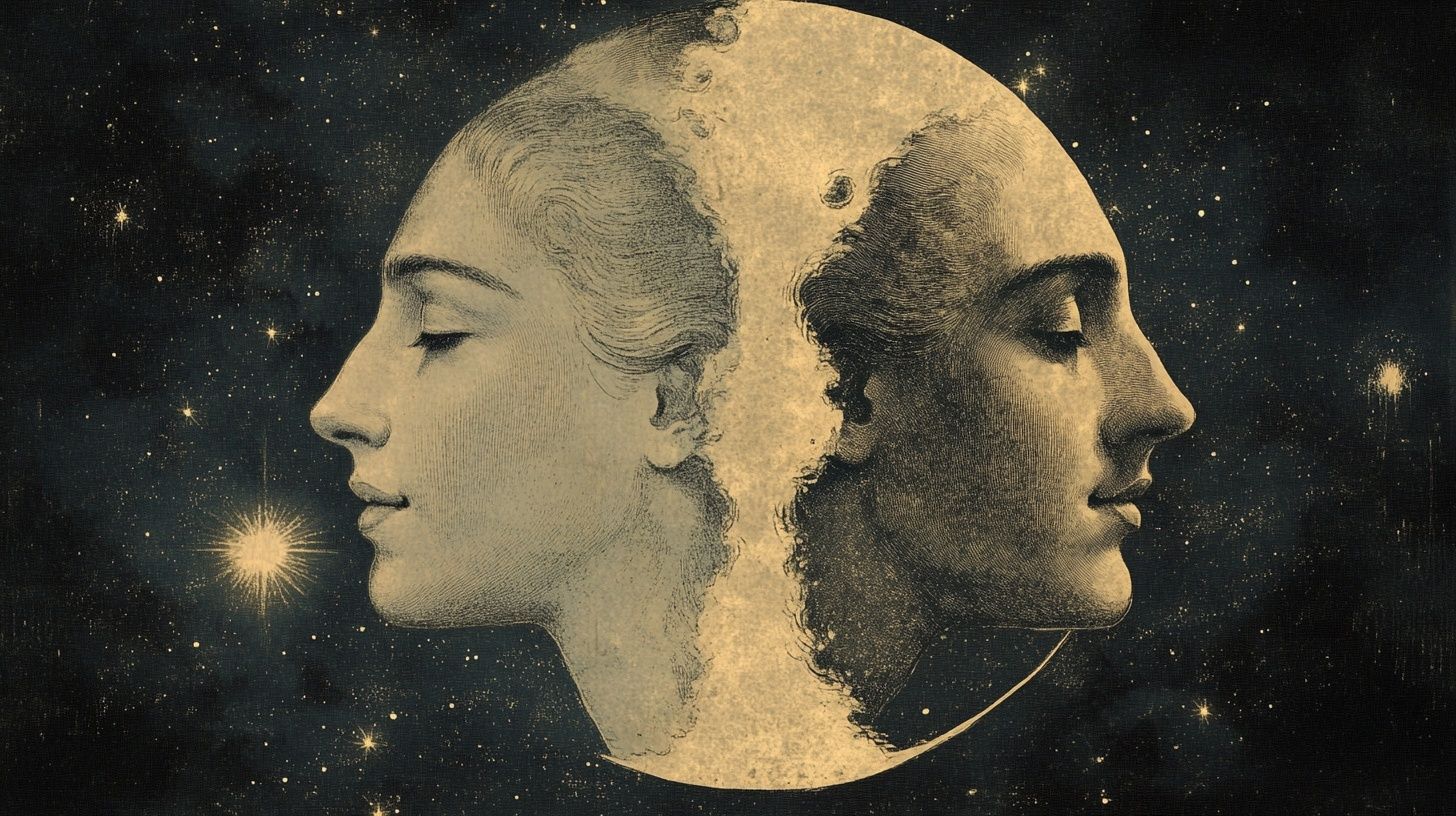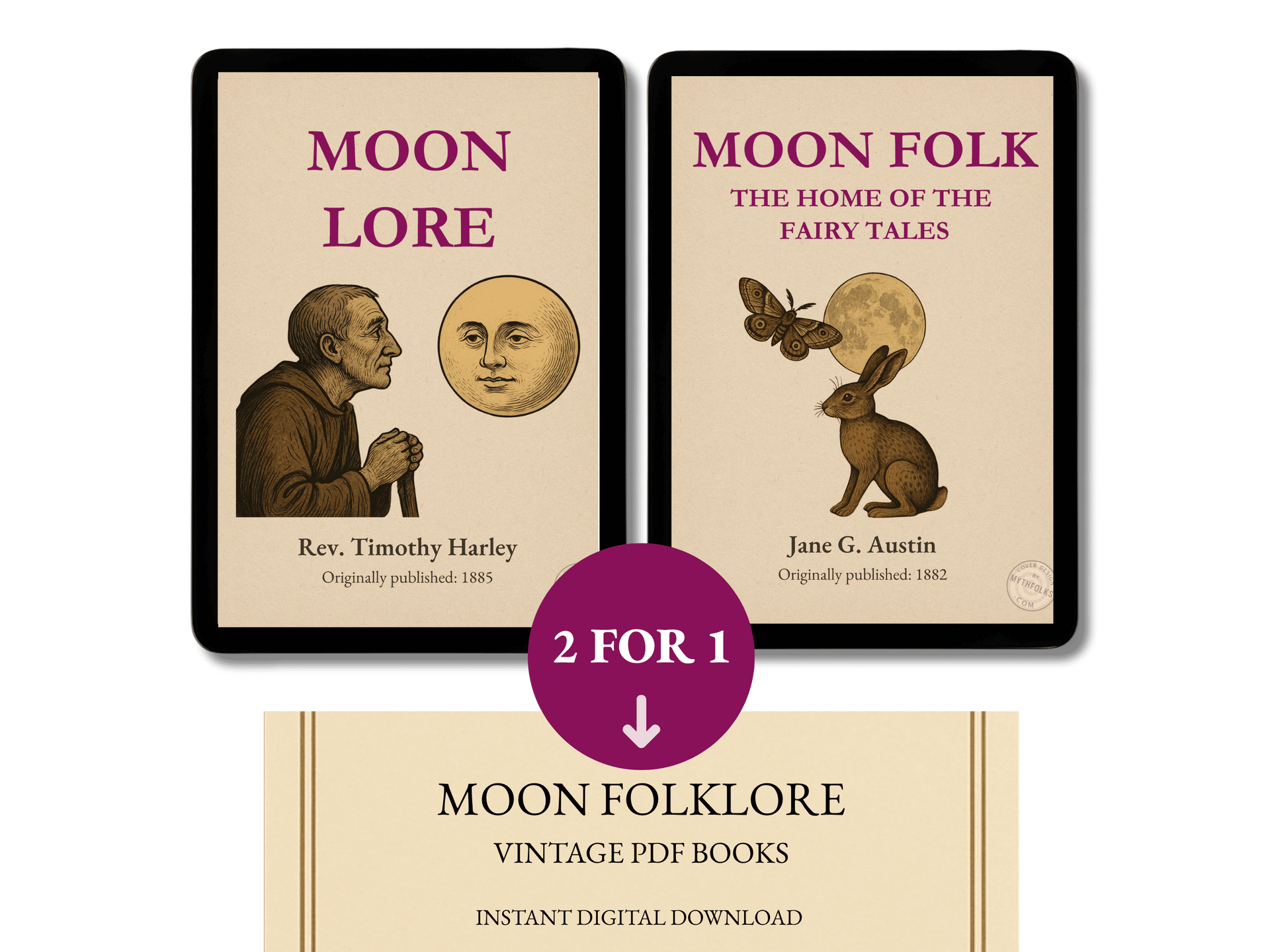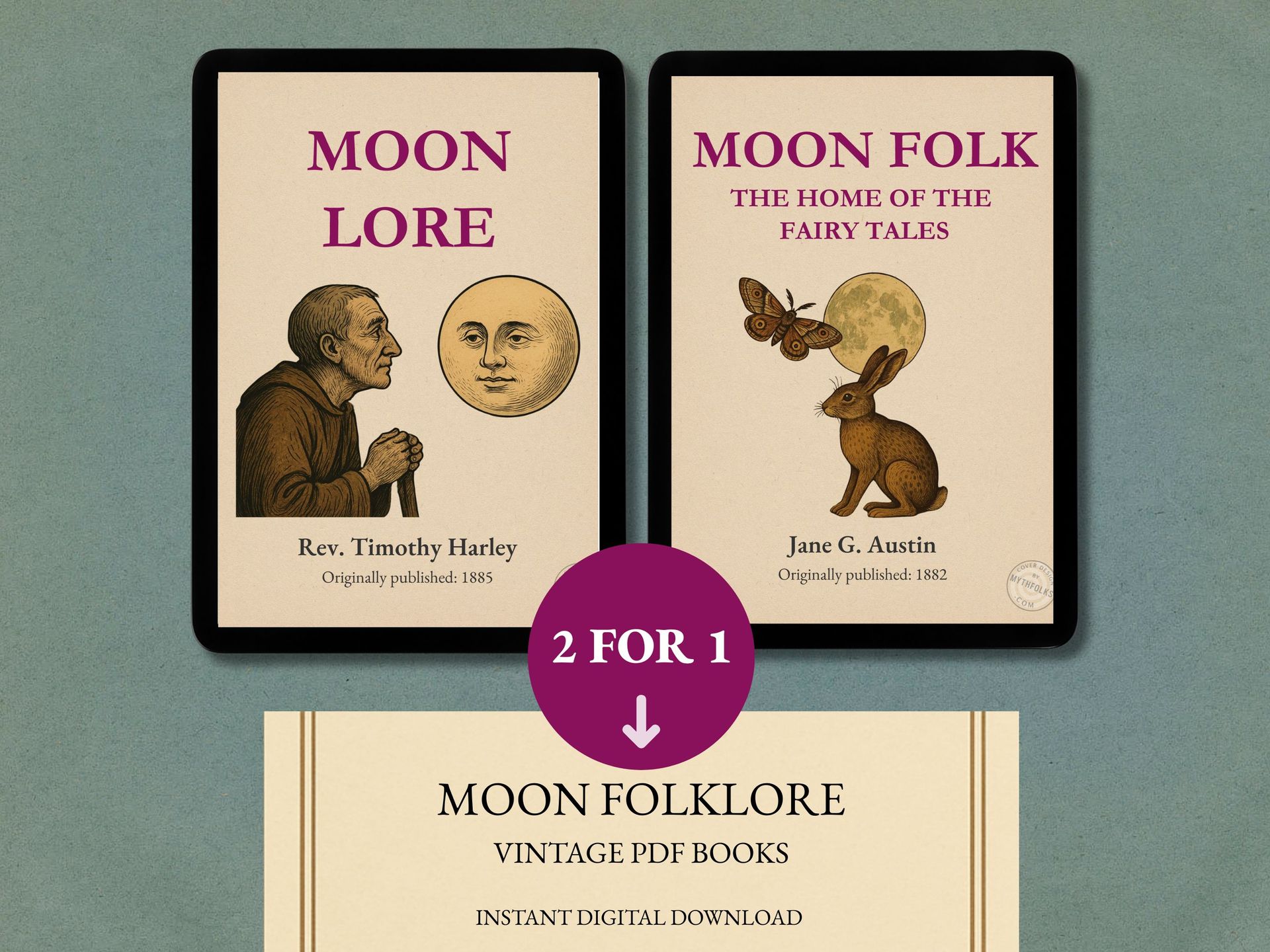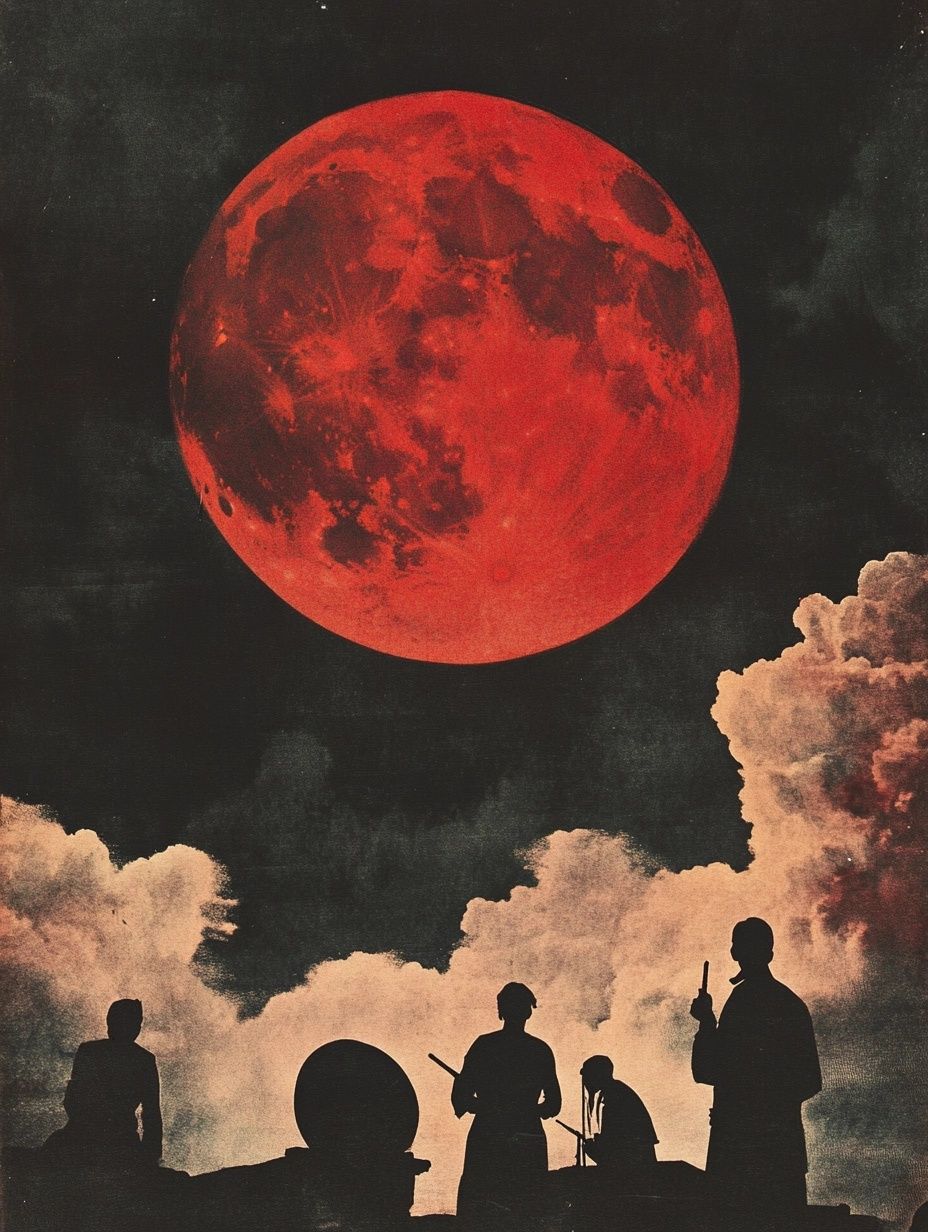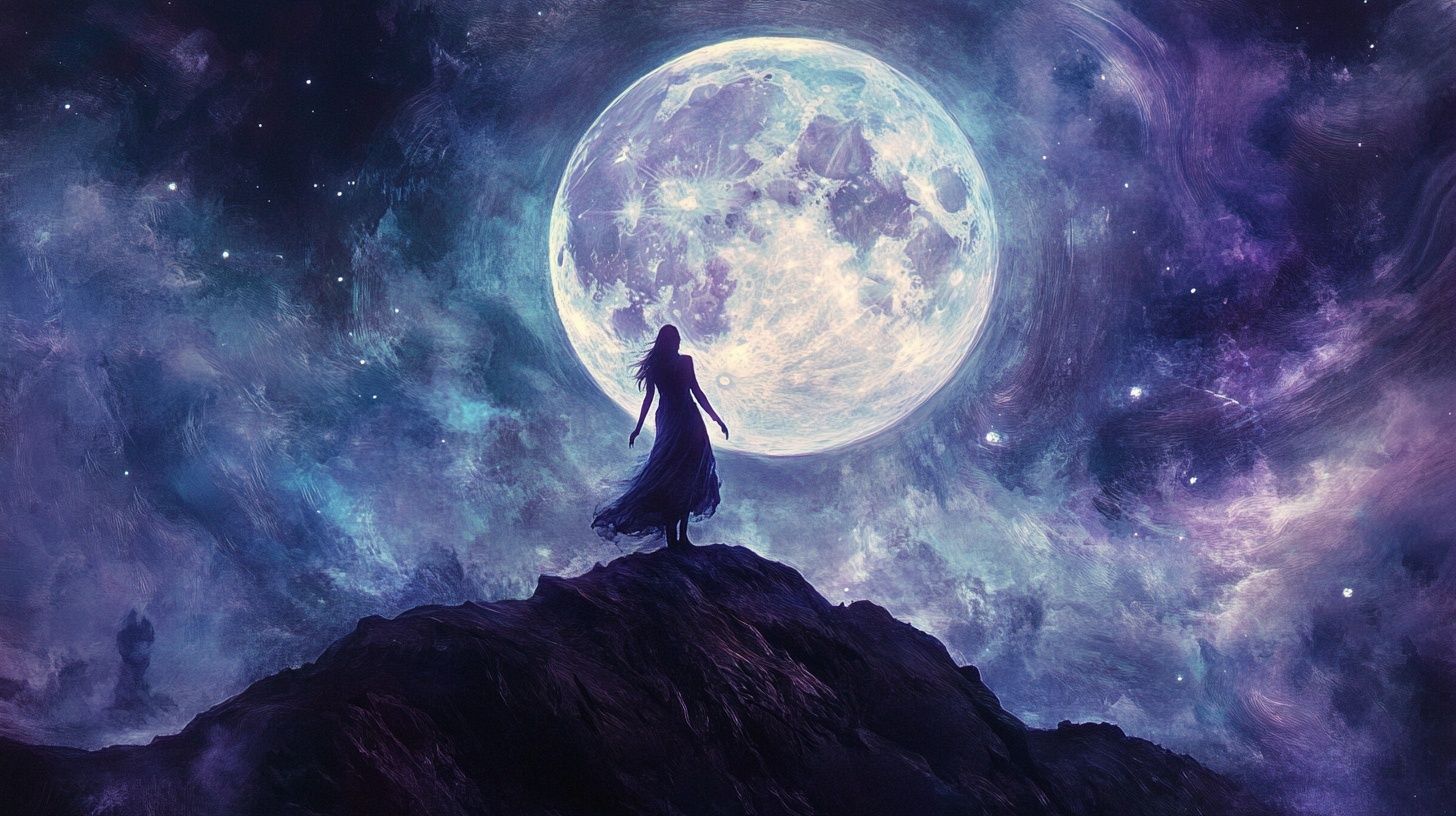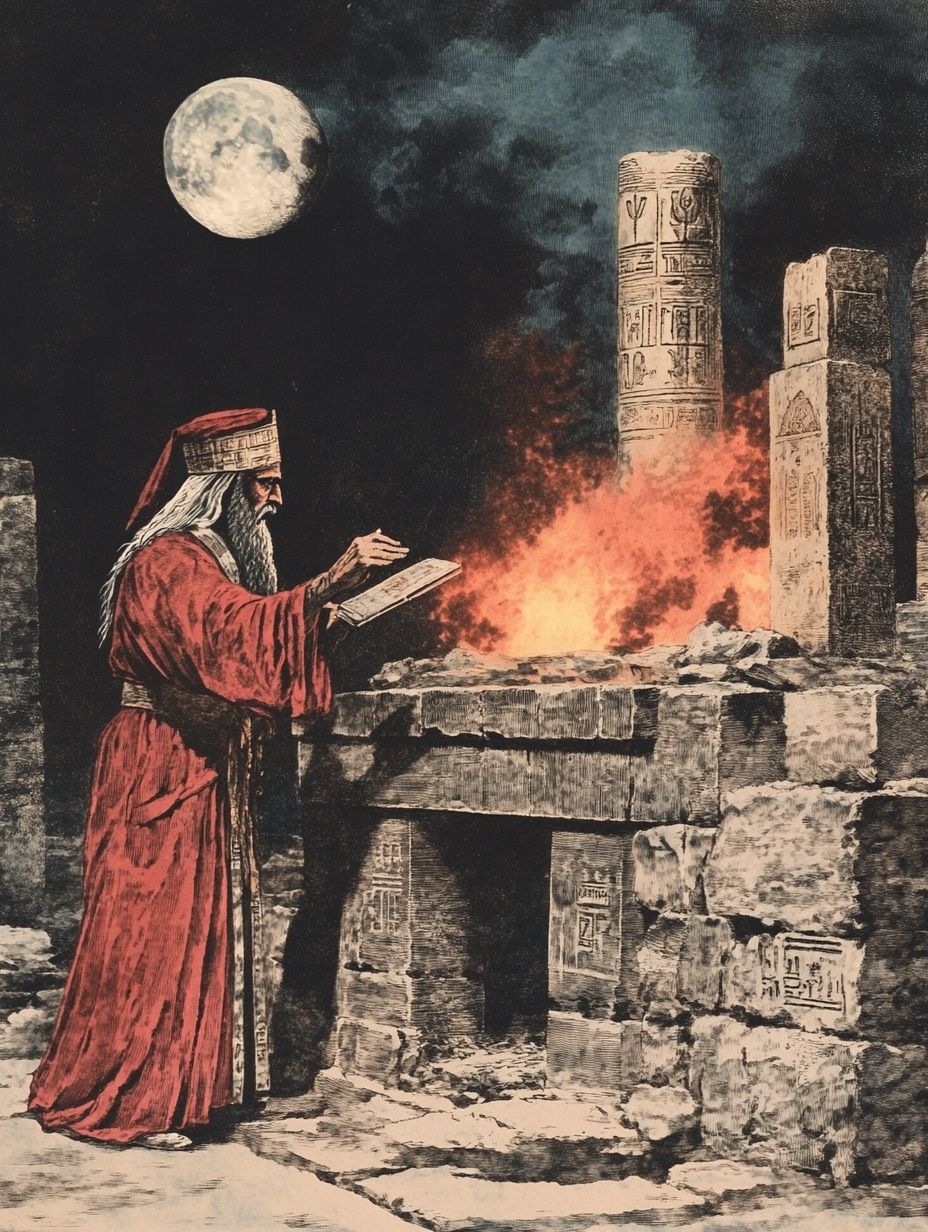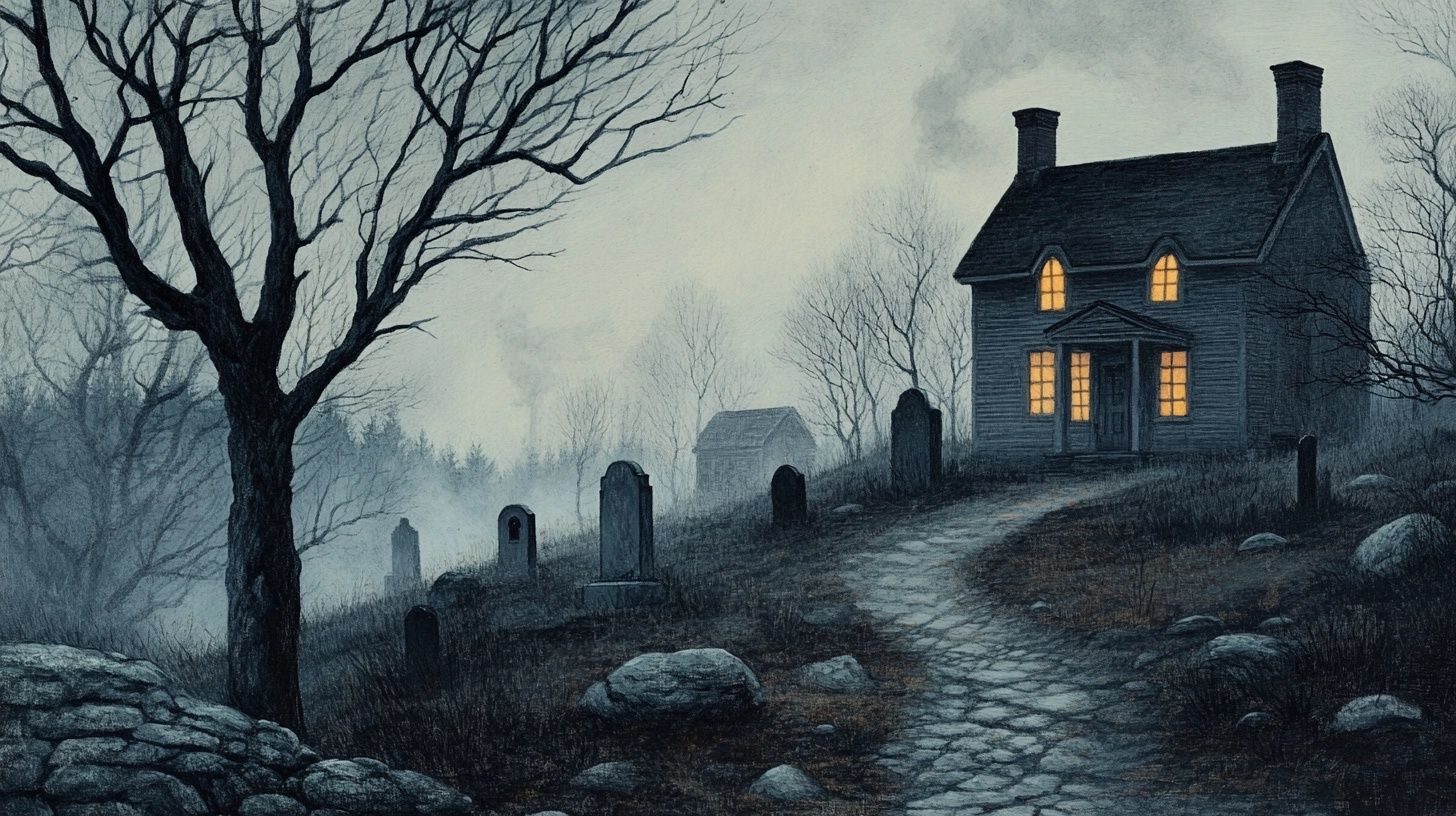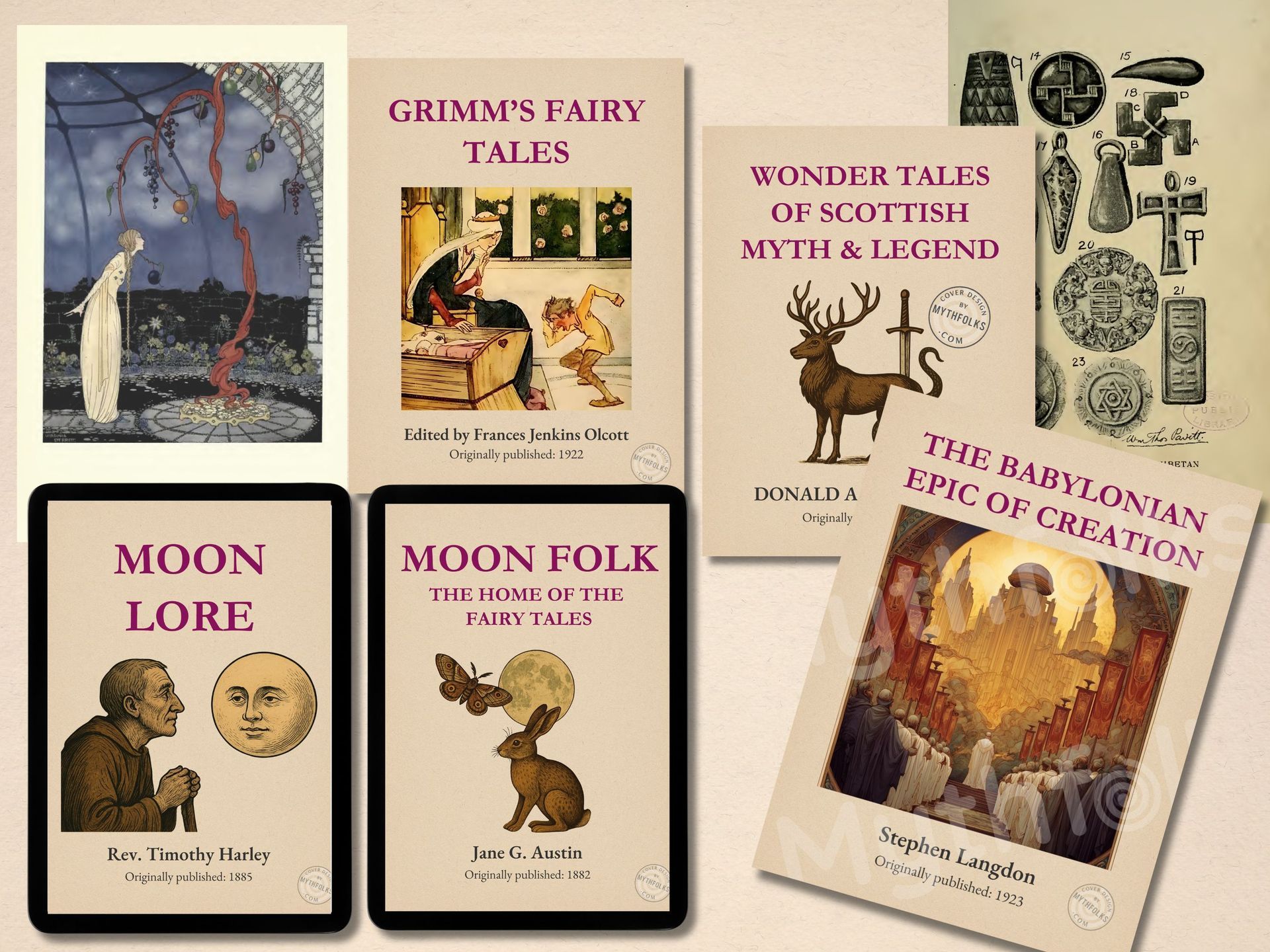In this article:
- Are there more moon goddesses than gods?
- Moon deities of ancient Mesopotamia
- Moon deities of Ancient Egypt
- Moon deities of European mythologies
- Moon deities of Ancient Greece & Rome
- Moon deities of Celtic mythology
- Moon deities of Norse mythology
- Moon deities of Slavic mythology
The powerful lunar gods & goddesses of ancient mythologies are some of the best stories in moon folklore (and any folklore, really).
With their links to magic, life cycles and very real, very human fallibility, these stories often share common themes, especially in closely related geogrpahical regions. Which is normal and makes sense for folklore stories that are so often passed along orally.
I've pulled together short overviews of the famous - and less famous - major deities from global lore plus answered the very important question:
Are lunar deities more likely to be women than men? Find out next!
Updated: 26th Jul 2025
Author: Sian H.
Are there more moon goddesses than gods?
This was an early question I wondered when I started researching this article so I thought I'd clear it up at the beginning!
In short, no, there aren't more moon goddesses than moon gods.
It often feels like that - our modern perception often links the moon to feminine energy which can be mistaken for being specifically related to women (but is in fact about the energy itself and not gender).
But ancient cultures tell a different story and the moon was just as likely to be male.
Traditionally, the sun was considered feminine and the moon masculine. Studies of linguistics also confirm this. The ancient Anglo-Saxon word for moon (móna) was masculine. In German, the moon was called "Lord Moon," while the sun was "Lady Sun". The fear the moon caused during eclipses, often led to its worship as a "heaven-man" or "monthly god."
The idea of the moon being mostly feminine seems to come largely from the classical Greek and Roman myths. But, the true picture of moon deities is balanced and both male and female figures reflect the moon's complex, universal power.
Let's see what all the global ancient cultures have to say...
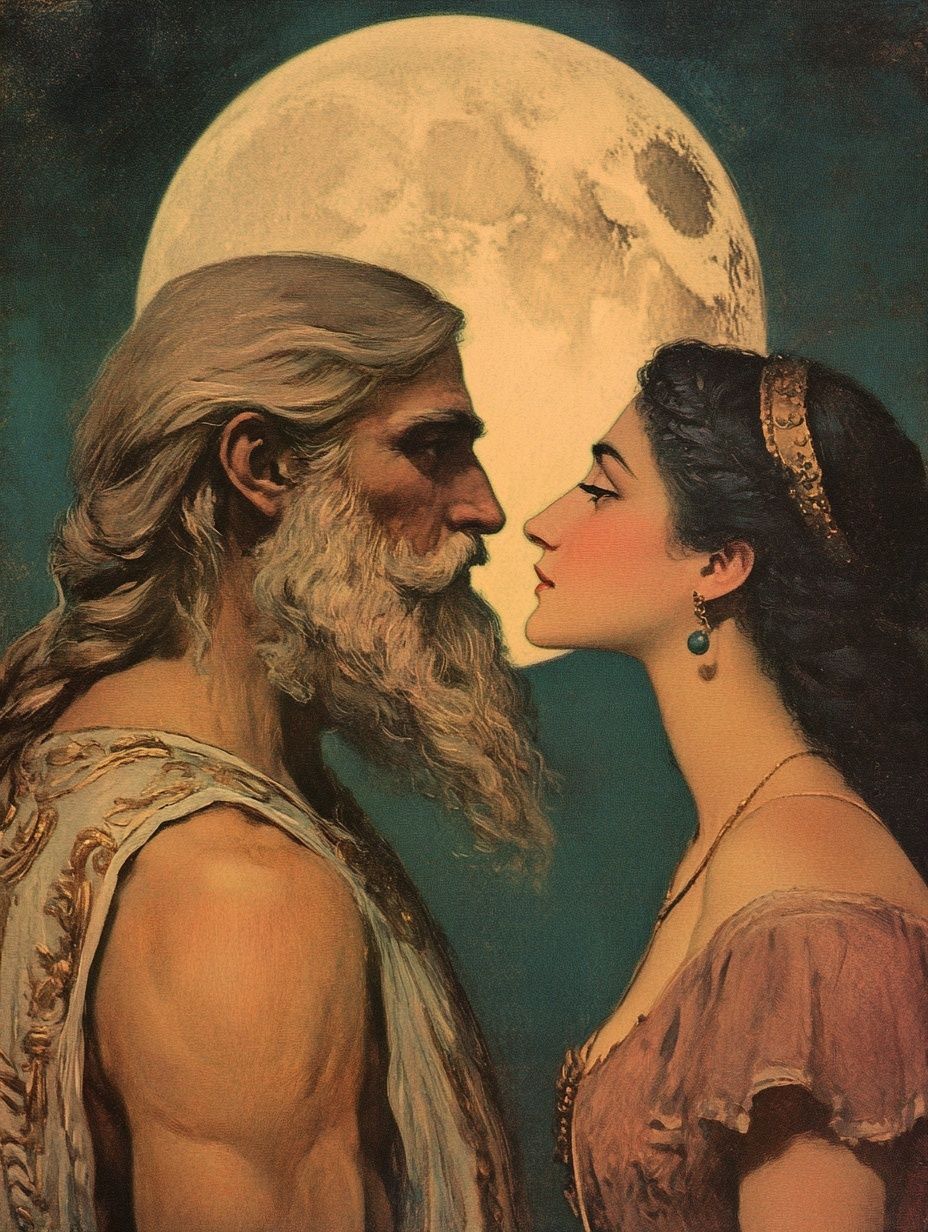
Moon deities of Ancient Mesopotamia
Nanna / Sin (Sumerian / Akkadian):
Nanna, the moon god of the Sumerians (the first major civilization in ancient Mesopotamia), was also known as Sin to the later Akkadians, Assyrians and Babylonians.
Sin was believed to control time and was seen as vital for agriculture, since the moon's cycles guided the crucial times for planting and harvesting crops.
Back then, people were very afraid of lunar eclipses - understandably. They believed an eclipse was a direct attack on Sin which then meant trouble for their land and its (human) king.
To prevent disaster, they performed special ceremonies during eclipses to protect the human ruler and society. During an eclipse, a prisoner, commoner or even an animal could be temporarily placed on the royal throne as a "substitute king" (called a šar pūḫi).
After the eclipse passed and the perceived danger was over, the substitute king would be ritually disposed of (killed!), often by poison, ensuring the King's safety.
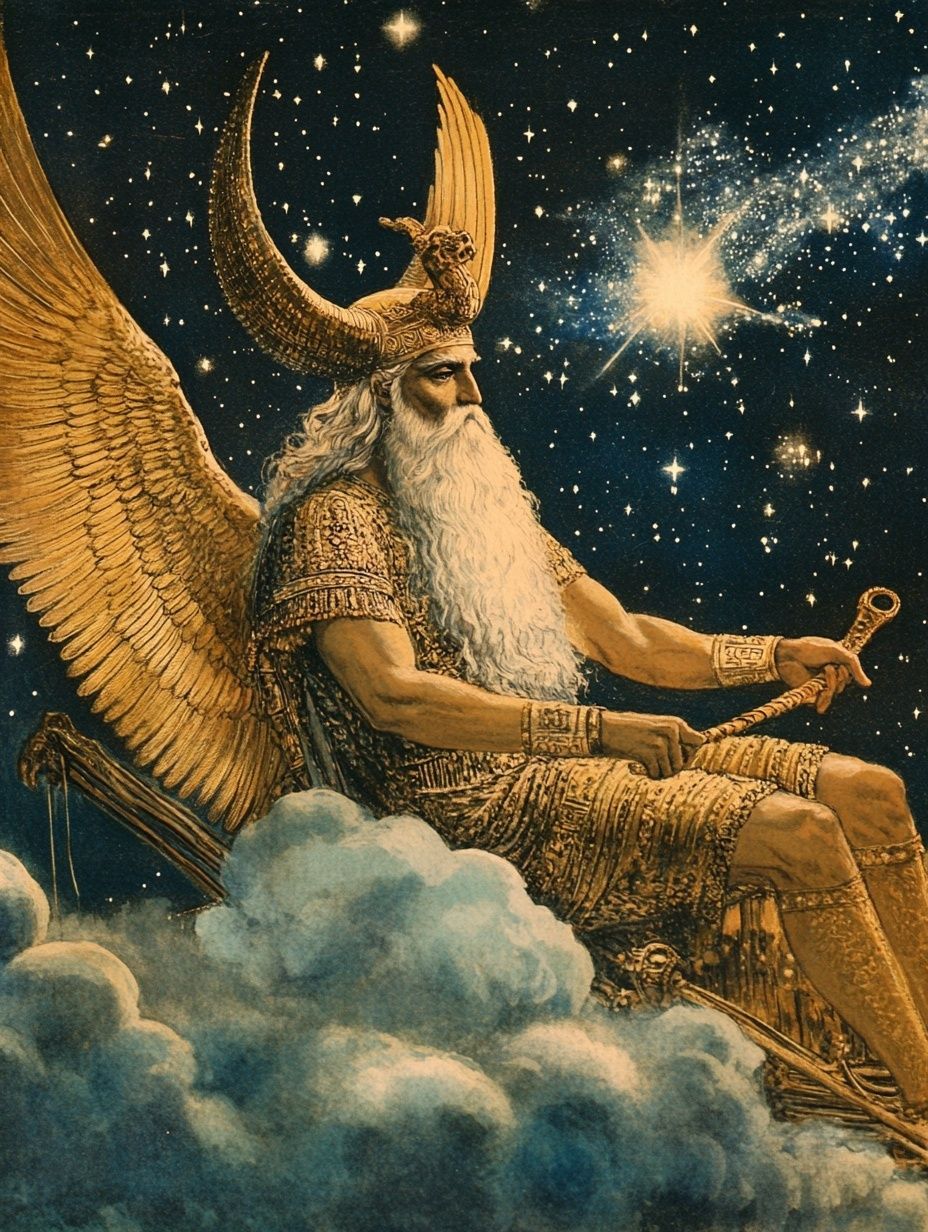
Moon deities of Ancient Egypt
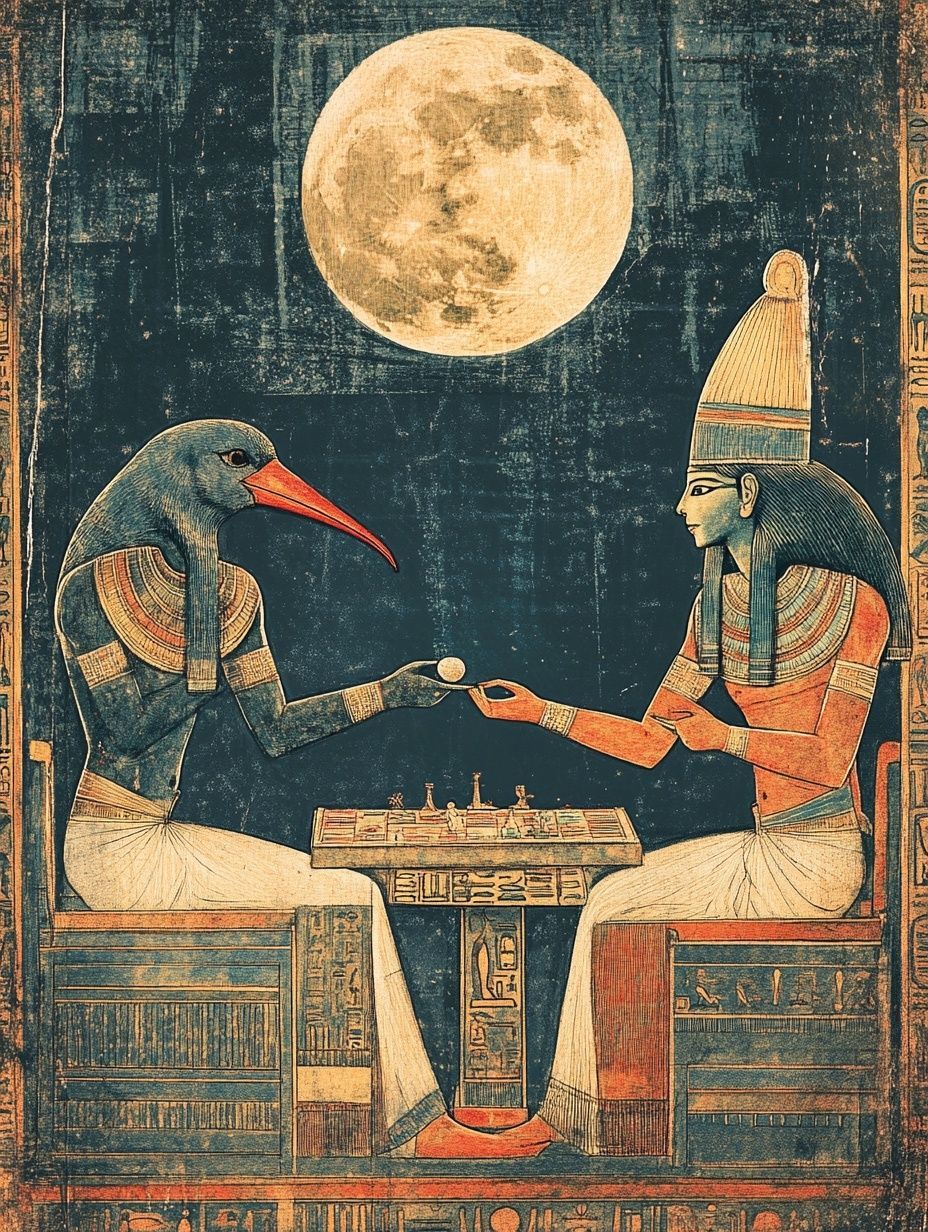
Khonsu:
Khonsu, whose name means "traveler," was a prominent Egyptian moon god linked to fertility, healing and protecting travelers at night. He was often depicted as a youth wearing a crescent moon and sun disk on his head and people frequently called on Khonsu to cure illnesses.
Khonsu's powerful healing abilities were demonstrated in the "Bentresh Stele." This ancient inscription records how King Ramses II sent a statue of Khonsu from Egypt to the land of Bakhtan (in modern-day Syria) specifically to cure Princess Bentresh, who was suffering from a demonic possession.
The stele recounts that Khonsu's divine presence successfully expelled the demon from the princess, cementing his reputation as a great healer and extending his influence beyond Egypt's borders.
Thoth:
Thoth, often depicted with the head of an ibis or a baboon, was an Egyptian god strongly associated with the moon's light, as well as with writing, magic and wisdom.
Thoth also played a crucial role in creating five extra days at the end of the 360-day Egyptian year.
According to myth, the sun god Ra cursed the sky goddess Nut, preventing her from giving birth on any day of the existing calendar.
To help Nut, Thoth challenged Khonsu, the moon god, to a game of senet, an ancient board game. Thoth staked some of his own wisdom and knowledge and, winning consistently, gained a small portion of Khonsu's moonlight for each of five successive days (specifically, one-seventieth of Khonsu's moonlight per day, multiplied by the twelve lunar months).
These five extra days were then added to the end of the year, outside Ra's original curse, allowing Nut to give birth to Osiris, Horus the Elder, Set, Isis and Nephthys. This act expanded the year and showed Thoth's authority over time and the lunar cycles, won directly from the moon god himself.
Moon deities of European Mythologies
Moon deities of Ancient Greece and Rome:
Selene (Greek) / Luna (Roman):
Selene was the direct personification of the moon in Greek mythology, often shown as a beautiful woman with a crescent moon on her head, driving a silver chariot pulled by two winged horses across the night sky.
While she represented the moon itself, she was a less active deity compared to others.
A notable story tells of her love for the mortal shepherd Endymion. Selene was so enamored by his beauty that she begged Zeus to grant him eternal youth and sleep so she could visit him every night in a cave on Mount Latmos.
Zeus, respecting Selene's plea as an Olympian goddess and recognizing the intensity of her love for the mortal, granted her wish, ensuring Endymion's perpetual slumber and preserving his beauty.
From then on, every night as the moon crossed the sky, Selene would descend to visit Endymion in his eternal sleep, embracing him in his cave. Their union is said to have produced fifty daughters, the Menae, who represented the fifty lunar months of the Greek calendar.
Luna & Lunus
Selene's Roman counterpart, Luna, held similar associations. There is nothing available online around this, but one of my favourite books on lunar mythology,
"Moon Lore" by Timothy Harley (which you can purchase here as a PDF book!) also references the Roman male personification of Lunus in a discussion around the moon as a masculine deity.
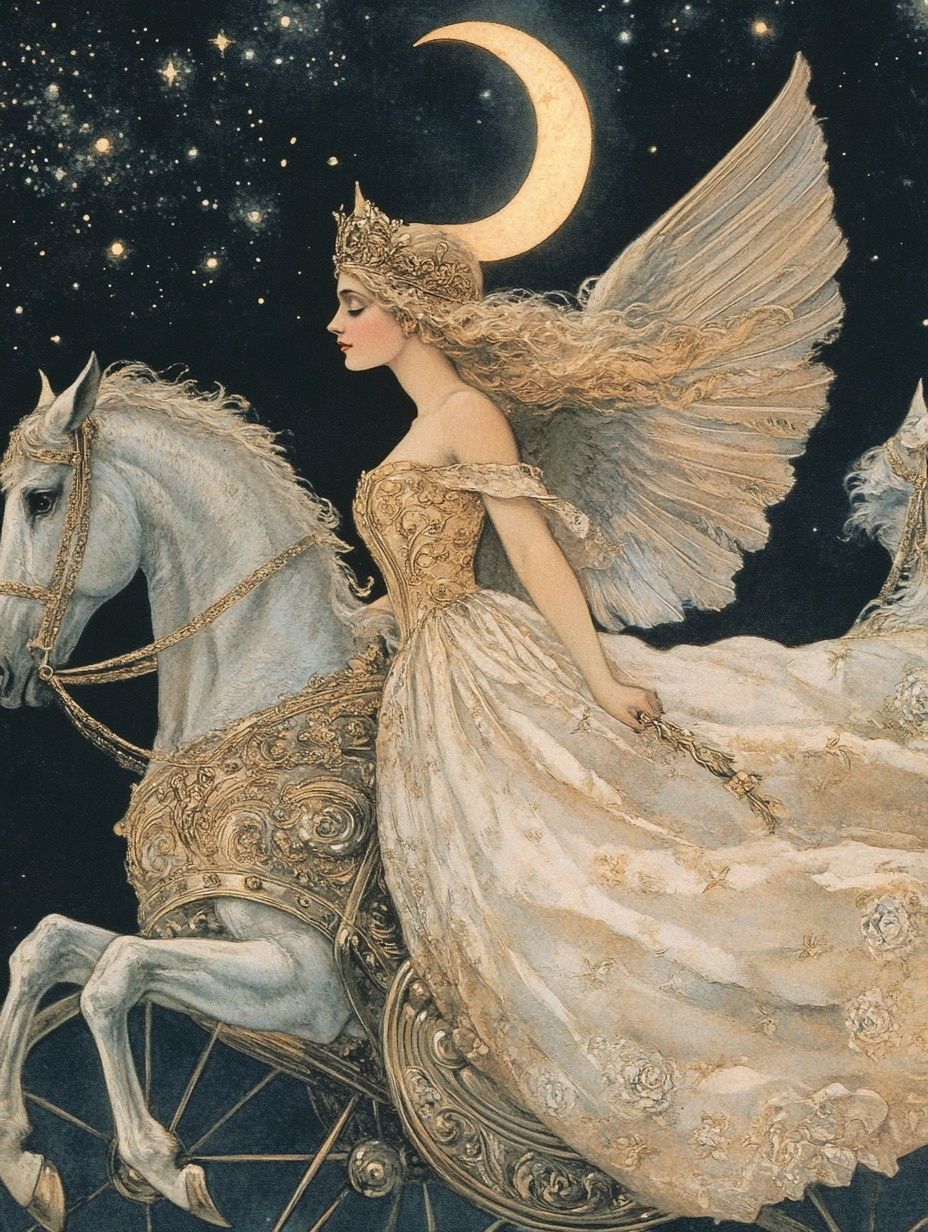
Enjoying this article? Discover original moon myths & legends in my vintage Moon folklore ebook bundle and get
2 for the price of 1!
(Clicking the link will open the Mythfolks Etsy shop in a new tab.)
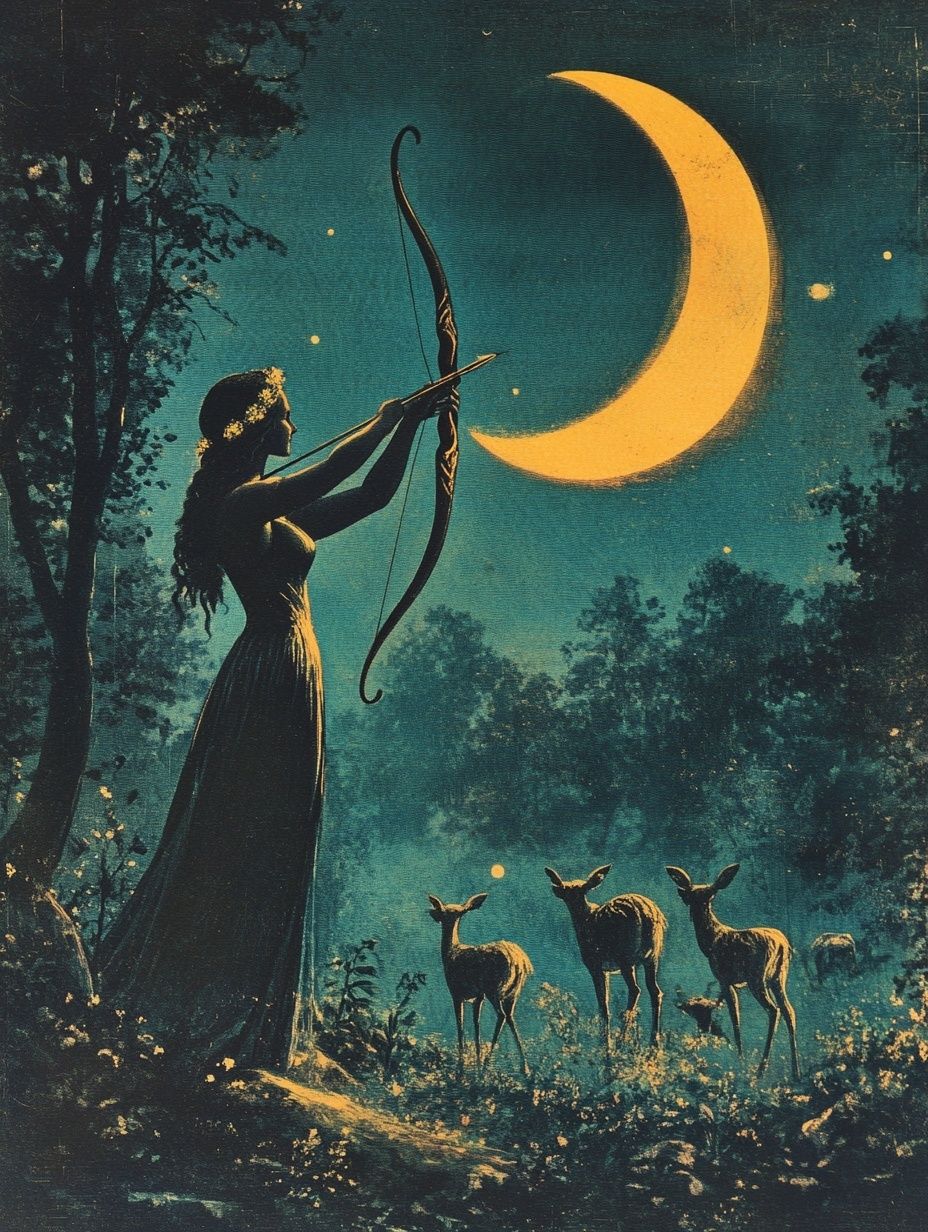
Artemis (Greek) / Diana (Roman):
Artemis was the Greek goddess of the hunt and wild places and she was strongly linked to the moon.
Her main symbol was the crescent moon, which she often carried as her bow and her independent spirit perfectly matched the moon's wild and mysterious side, especially its waxing crescent phase.
Artemis also looked after wild animals and protected young girls and her role in childbirth directly connected her to the moon's ancient ties to female fertility and cycles.
Diana, her Roman counterpart, was famously worshipped at Lake Nemi, a sacred grove near Rome. Here, her priests, known as Kings of the Wood, earned their position by challenging and defeating the previous priest in single combat, a unique and ancient ritual that reflected Diana's powerful and untamed nature.
Hecate (Greek) / Trivia (Roman):
Hecate was arguably the most powerful lunar goddess in terms of magic. She was the Greek goddess of witchcraft, crossroads, necromancy and ghosts and she was often depicted with three faces or bodies.
Hecate was strongly tied to the dark moon and waning phases, periods when the moon's light is diminished or absent. These times were considered ripe for banishing, introspection and engaging with the unseen world.
Rituals to Hecate were often performed at crossroads under the cover of night, with offerings of food and dogs, highlighting her role as a guide through hidden and mysterious realms. Her Roman counterpart, Trivia, shared many of the same characteristics.
Moon deities of Celtic mythology
Aine (Irish):
Aine (Irish):
Aine is an important Irish goddess and while Irish mythology doesn't feature a single, definitive lunar deity, she is strongly associated with the full moon, as well as with love, summer, sovereignty and fertility.
Her presence often coincided with Midsummer festivities (Lá Bealtaine) when the full moon was believed to bring warmth, abundance and powerful magical energy. Farmers would traditionally bring her offerings then, to ensure strong harvests and she was known to grant insights or inspire creativity, particularly during moonlit nights.
Another story involves her connection to the Rock of Aine (Cnoc Áine) in County Limerick. She's said to live there and is considered the queen of the local fairies, often appearing as a beautiful woman or a red horse (ah I love the nuance in folklore stories!).
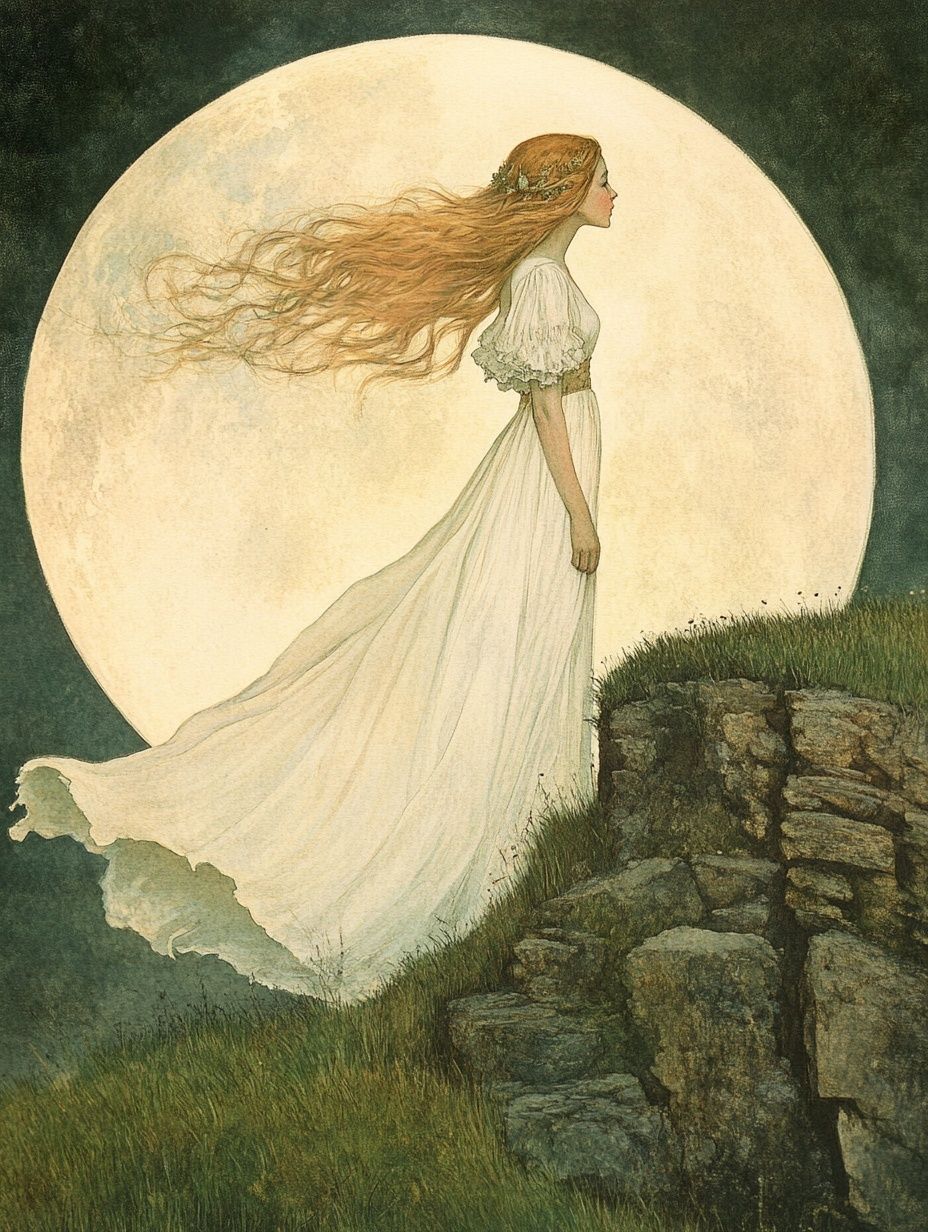
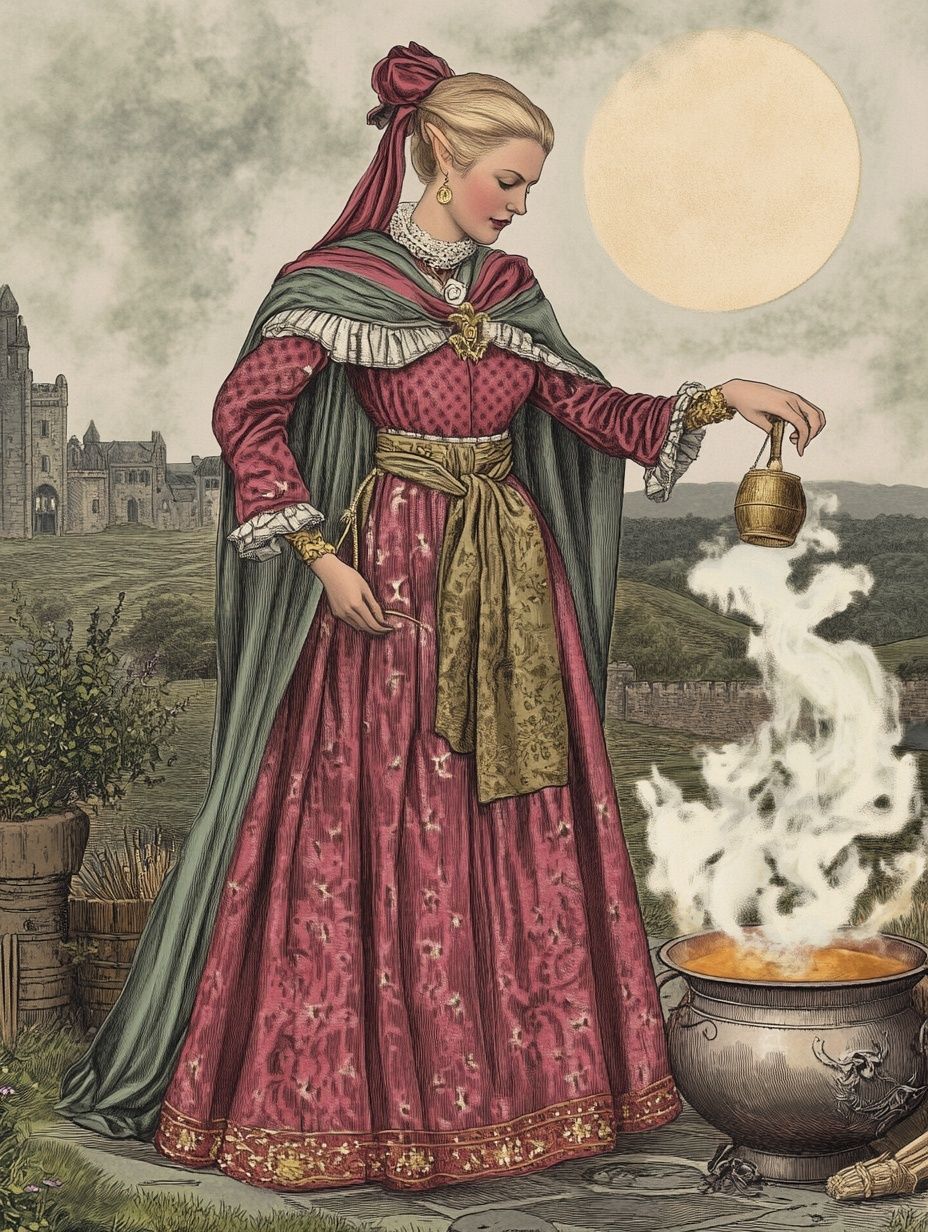
Cerridwen (Welsh):
Like the Irish, there is no single moon deity in Welsh folklore, but Cerridwen is a powerful Welsh goddess of inspiration, wisdom and magic and strongly linked to the moon (which is also intrinsically linked to magic).
Her most famous attribute is her cauldron of poetic inspiration and transformation, where she brewed a magical potion called Awen. The cauldron reflects the transformative nature of the moon's cycles.
In her central myth, she brewed the Awen potion for a year and a day, intending it for her son. However, a servant boy named Gwion Bach accidentally consumed three drops of the potent brew.
This led to a dramatic chase where Cerridwen, furious, transformed into various animals (greyhound, otter, hawk, hen) to pursue Gwion, who also transformed (hare, fish, bird, grain). Eventually, as a hen, she swallowed him as a grain of wheat, becoming pregnant and later giving birth to Taliesin, one of Wales's greatest poets, embodying transformation and rebirth under the moon's influence.
Well, quite.
Moon deities in Norse mythology
Mani:
In Norse mythology, the moon is personified by the male god Mani, whose name literally means "moon" in Old Norse.
He's the brother of Sol, the sun goddess. Mani guides the moon's chariot across the sky, pulled by two horses, called Alsvid and Arvak in some accounts.
He's also in a perpetual chase, constantly pursued by the wolf Hati, whose full name is Hati Hróðvitnisson. The myth states that Hati will eventually catch and devour Mani at Ragnarök, the end of the world.
This endless pursuit symbolizes the moon's constant movement and the ancient fear of its periodic disappearance during eclipses, or its ultimate end.
Moon deities in Slavic mythology (Eastern Europe):
Mavka:
Mavka are alluring female nature spirits from Slavic folklore, notably in Ukrainian traditions.
Though not direct moon goddesses, they are deeply tied to the moon's mystical influence on forests and water and typically appear under moonlight.
Believed to be the spirits of young women who died prematurely (often by drowning or unbaptized), they have no reflection and a distinctive hole in their back that reveals no shadow.
They lure young men into the woods with enchanting songs and dances, leading them to their death through tickling or drowning (global folklore is full of these tales about "wicked women" who lead innocent men astray. Who would have thought.)
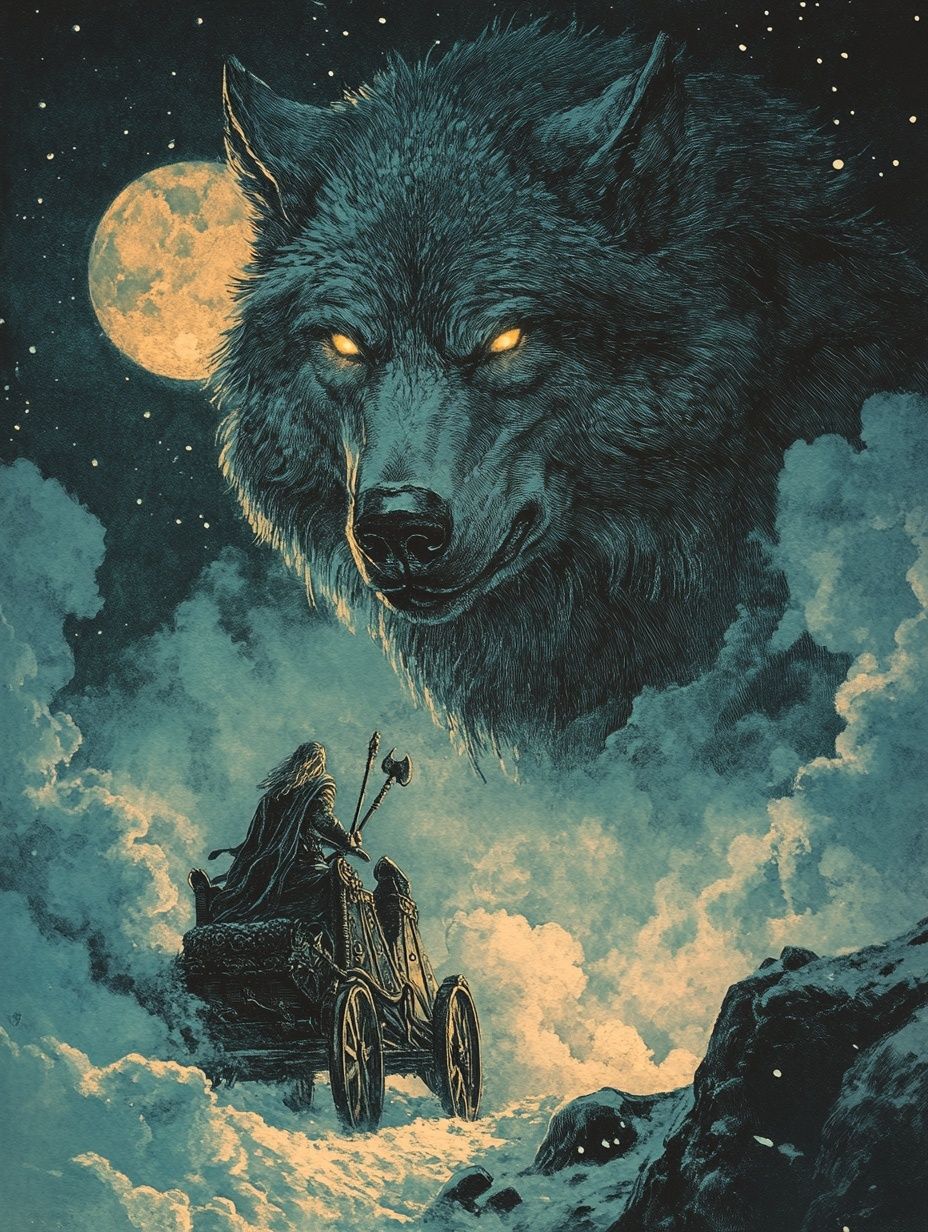
Moon deities of Asian mythologies
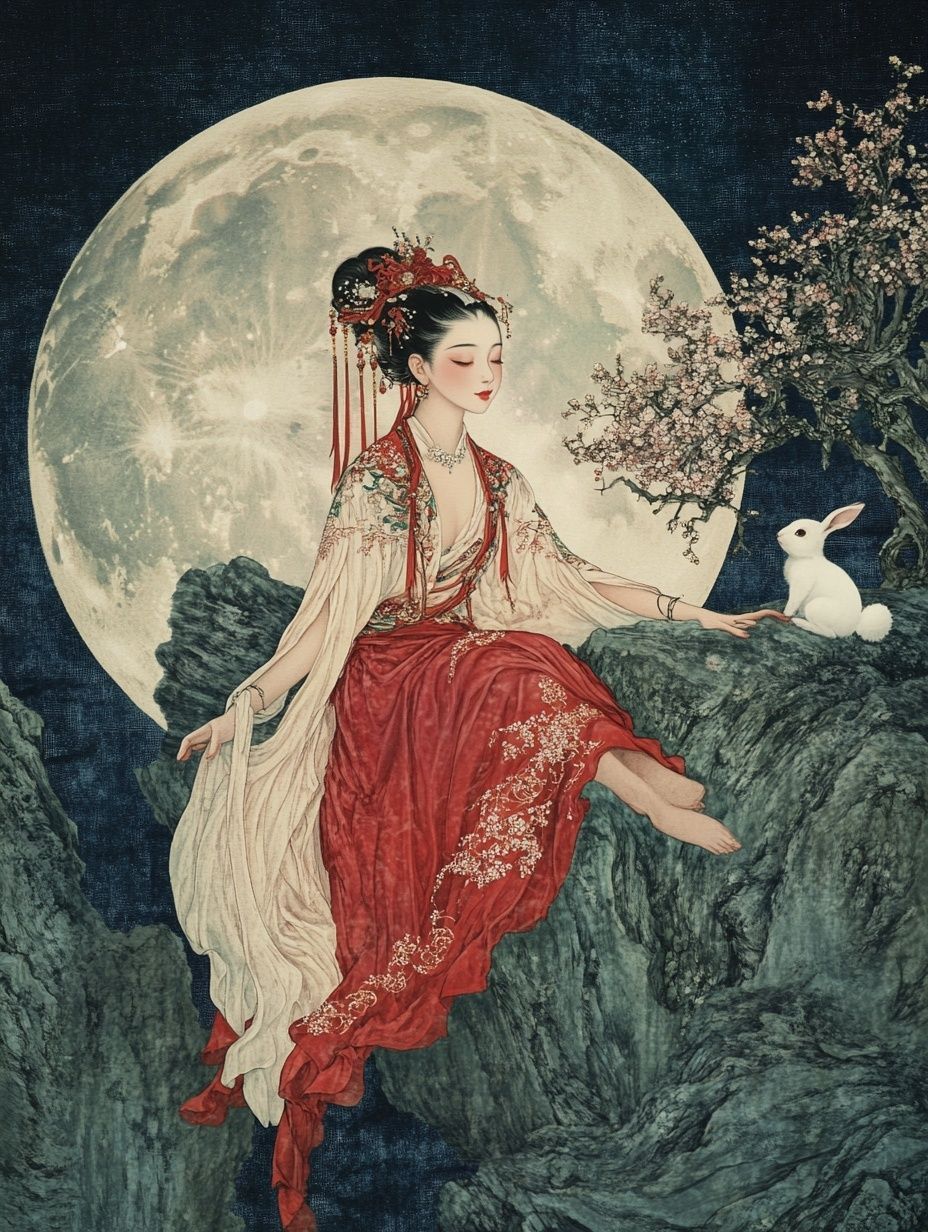
Chang'e (Chinese):
Chang'e is the renowned Chinese moon goddess. Her story begins with her husband, the archer Hou Yi, who saved the world by shooting down nine excess suns.
For this, he received an elixir of immortality. In the most common version of her myth, Chang'e consumed the entire elixir herself. Some stories say she did this to prevent her husband's jealous apprentice, Peng Meng, from stealing it, while others suggest she took it out of a longing for immortality.
After drinking it, she floated to the moon, where she lives eternally. She is often depicted with the Jade Rabbit, who constantly pounds ingredients for another elixir and sometimes with Wu Gang, a woodcutter doomed to eternally chop down a self-healing cassia tree on the moon.
Tu'er Ye (Chinese):
A lesser-known Chinese moon deity from Beijing folklore, Tu'er Ye, the "Rabbit Lord," is a male rabbit god who lives on the moon, often depicted as a companion to Chang'e and typically portrayed dressed in warrior's armor.
Tu'er Ye is primarily worshipped during the Mid-Autumn Festival as a protector of children and health, rather than a direct cosmic ruler. Families offer him specific foods and handicrafts, believing he brings well-being and watches over the young.
Deep dive moon mythology with my vintage Moon folklore ebook bundle and get
2 for the price of 1!
(Clicking the link will open the Mythfolks Etsy shop in a new tab.)
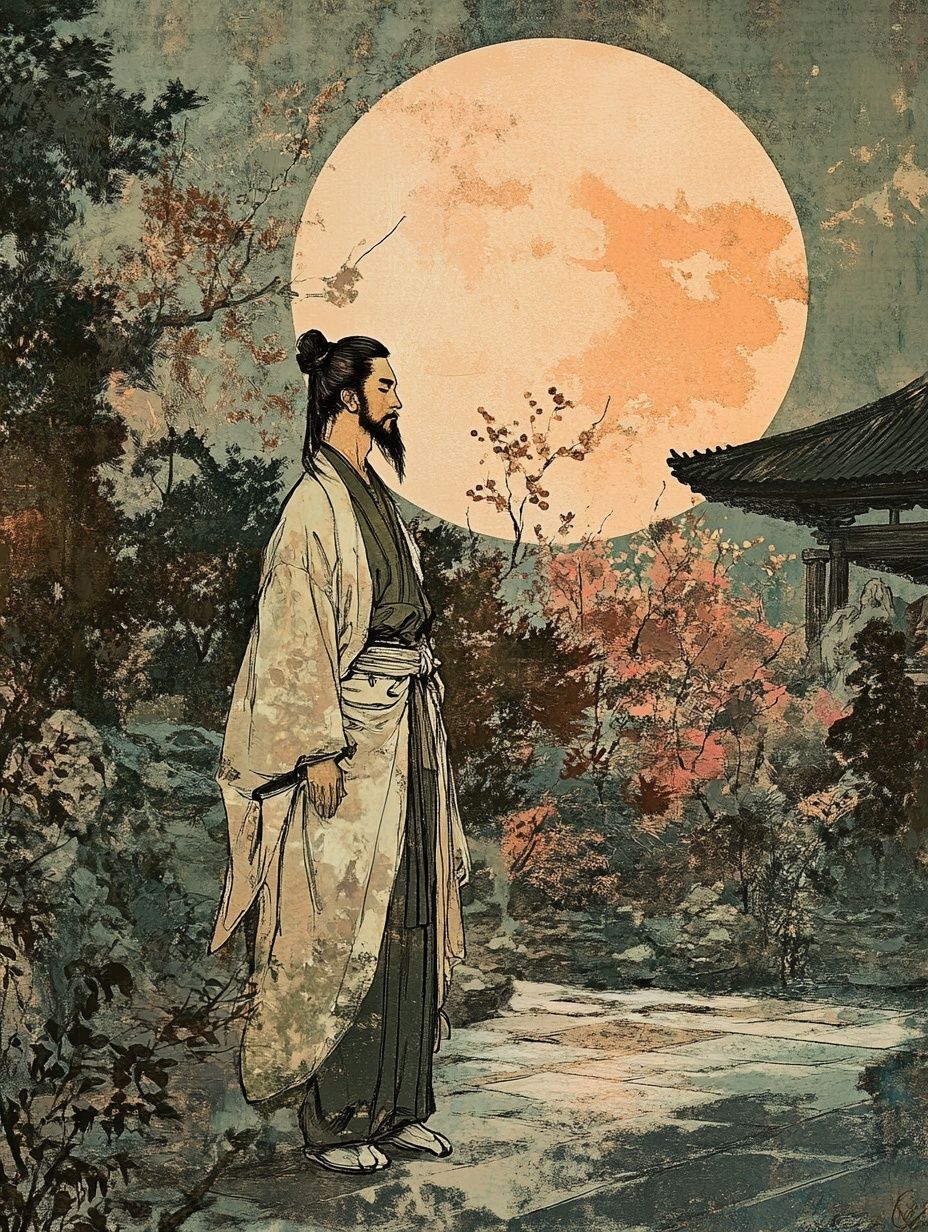
Tsukuyomi-no-Mikoto (Japanese):
Tsukuyomi is a male moon deity in Japanese Shinto mythology, and one of the "Three Noble Children." He was born from the right eye of the primordial god Izanagi during a purification ritual.
Tsukuyomi was once the partner of his sister, Amaterasu, the sun goddess. Their eternal separation, which explains the creation of day and night, began with a violent act: Tsukuyomi killed the food goddess Uke Mochi.
He was utterly disgusted by her method of producing food by spitting it out. Horrified by his brutality, Amaterasu declared she never wanted to see him again, leading to the permanent division of their realms and the distinct cycles of day and night.
Hằng Nga (Vietnamese):
Hằng Nga is the beloved Vietnamese moon goddess, often considered the Vietnamese counterpart to the Chinese Chang'e due to their similar stories.
While both myths involve an elixir of immortality and an ascent to the lunar palace, Hằng Nga's narrative carries its own unique Vietnamese details.
In many Vietnamese myths, Hằng Nga received her elixir from a celestial being like the Queen Mother of the West. She consumed it- sometimes accidentally, or out of curiosity or necessity - causing her to float to the moon, where she resides eternally in a beautiful lunar palace. She is frequently depicted with Thỏ Ngọc, the Jade Rabbit, who is her constant companion.
Hằng Nga is a central and cherished figure of the Mid-Autumn Festival (Tết Trung Thu) in Vietnam, representing beauty, purity, and the hopes and wishes of children, and she is widely celebrated during this time with moonlit festivities and traditional foods.
Chandra (Hindu):
Chandra, also known as Soma, is the prominent Hindu moon god. He's often depicted riding a magnificent chariot drawn by ten white horses and is associated with nocturnal wisdom, plants and the elixir of immortality (a concept similar to those I discussed above in Chinese and Vietnamese moon myths).
A significant story explains his waxing and waning phases - Chandra married the 27 daughters of Daksha, who represent the constellations.
However, he favored only one, Rohini. Daksha, angered by this favoritism, cursed Chandra to waste away. The gods pleaded for his life and the curse was modified so that Chandra would wax for 15 days and wane for 15 days, illustrating the moon's cyclical nature as a divine consequence of his actions.
Rahu and Ketu (Hindu, "Shadow Planets"):
These are powerful entities in Hindu mythology, often called "shadow planets," and were believed to be responsible for eclipses.
They originated from an Asura (demon) named Svarbhanu and their story also prominently features the nectar of immortality, or, amrita.
During the churning of the cosmic ocean for the nectar - amrita - Svarbhanu disguised himself as a god to drink it. The Sun (Surya) and Moon (Chandra) gods recognized him and alerted Vishnu, who decapitated Svarbhanu with his discus.
Because Svarbhanu had already consumed a drop of the nectar, his head (Rahu) and body (Ketu) became immortal celestial bodies. They eternally chase the sun and moon, occasionally swallowing them during eclipses as revenge for revealing their deception.
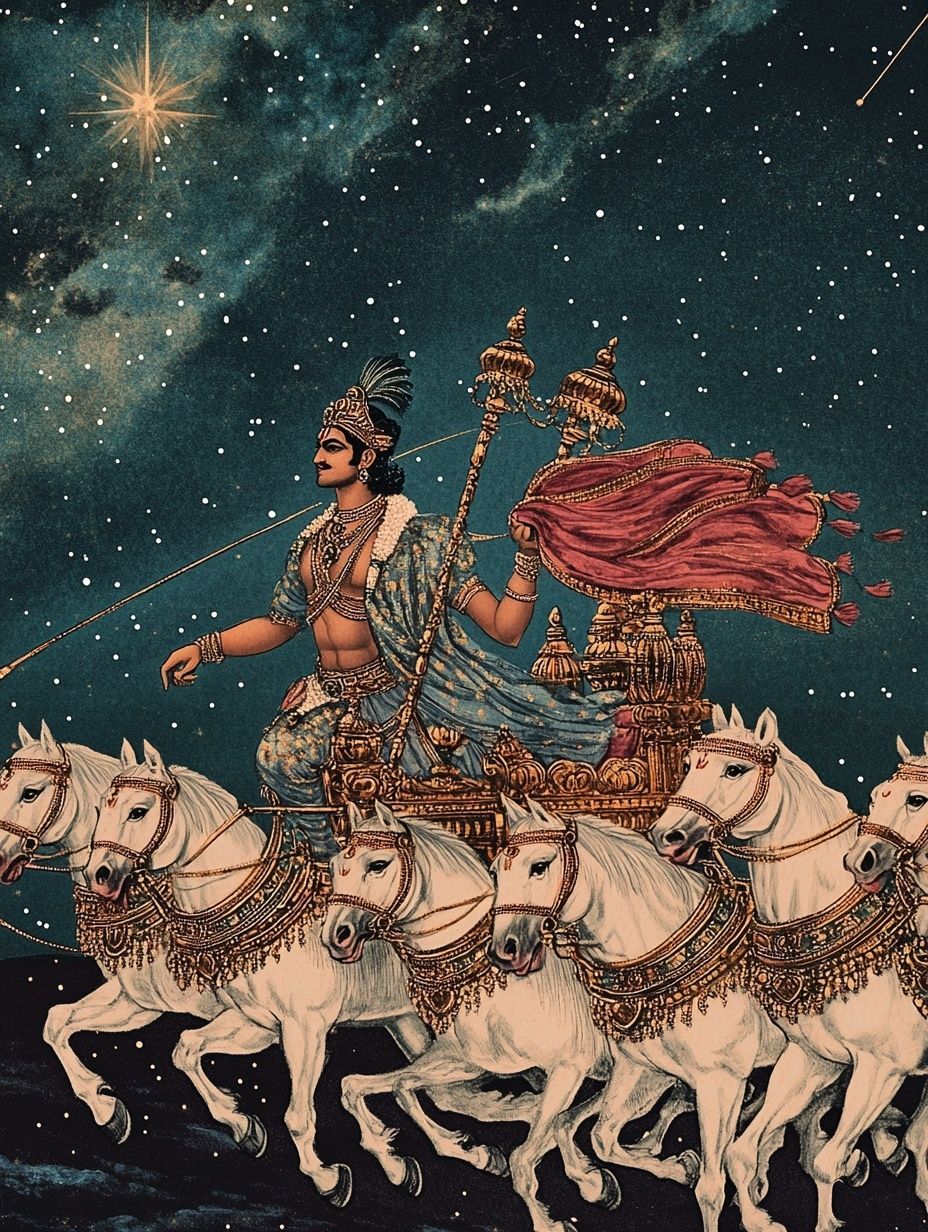
Moon Deities of Indigenous American Mythologies
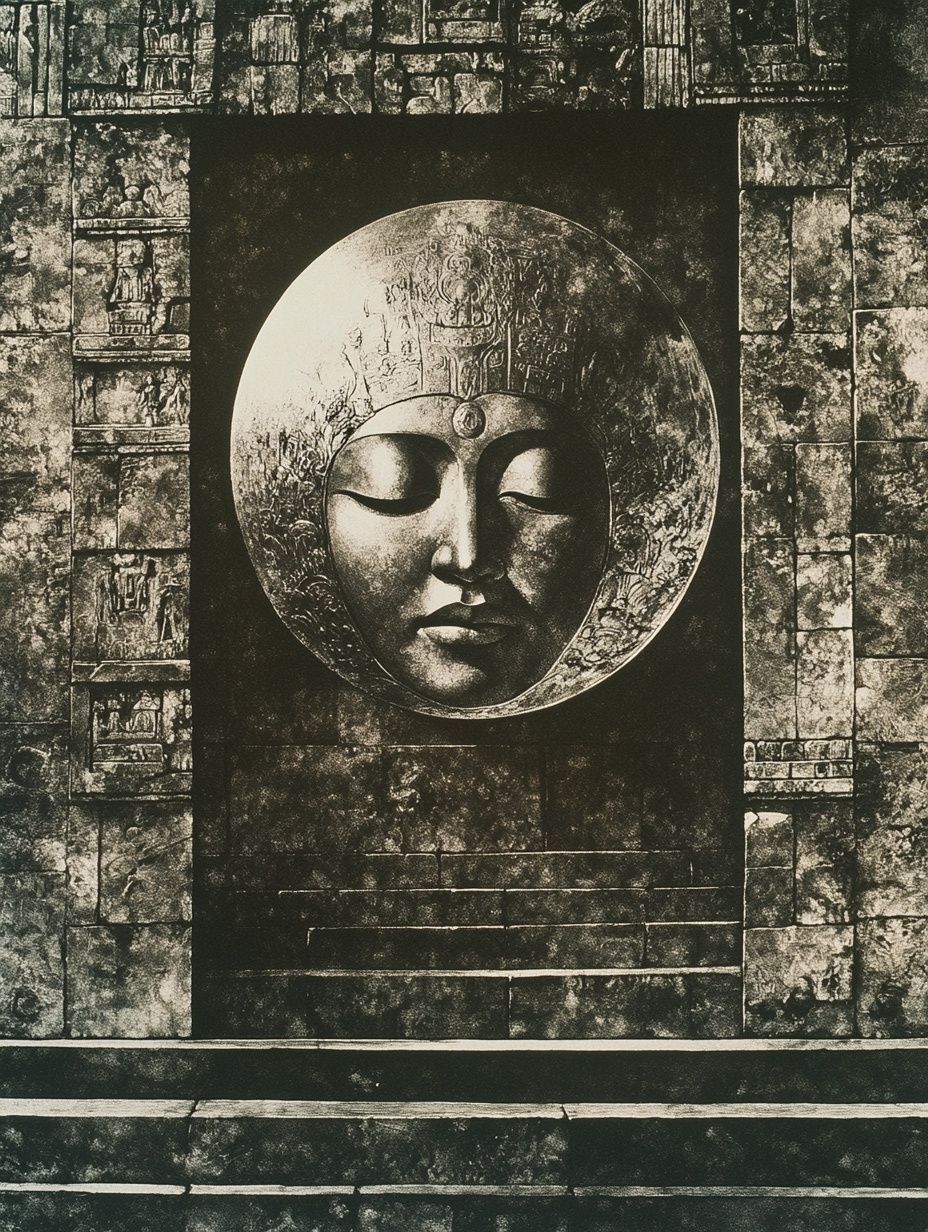
Mama Quilla (Inca):
Mama Quilla, meaning "Mother Moon," was the most important moon goddess in Inca mythology.
She was the sister and wife of Inti, the sun god (these inter-familial, incestuous relationships are extremely common in many stories from all ancient mythologies!).
She also protected women and marriage, regulating the agricultural calendar through her phases. During lunar eclipses, when the moon was believed to be attacked by a jaguar, the Inca would shout, throw spears and make loud noises, even sacrificing animals, to protect her.
Mama Quilla was fundamentally associated with silver, which the Inca considered the "tears of the moon" or its embodiment. Her primary place of worship was a magnificent silver-lined temple within the Coricancha, the most sacred temple complex in Cusco. This dedicated silver temple, designed to reflect the moon's light, powerfully illustrated her central and distinct role in Inca cosmology, mirroring Inti's golden temple.
Changing Woman (Diné/Navajo):
Changing Woman (also known as Estsanatlehi) is a central figure in Diné (Navajo) mythology, embodying creation, transformation and the cycles of life.
While not solely a moon goddess, her abilities to age and renew herself perfectly align with the moon's phases. According to myth, she created the first four Navajo clans from her own skin rubbed from various parts of her body.
She teaches the Diné how to live in harmony with the earth and perform essential ceremonies, representing the nurturing and life-giving aspects often associated with the moon.
Kuu (Inuit):
In Inuit mythology, Kuu is the moon god, often depicted as a hunter. The moon provides essential light for hunters and travelers during the long Arctic nights. Kuu is sometimes associated with animals (especially caribou) and fertility, representing the moon's direct influence on the survival of the community through successful hunts.
One myth tells of Kuu chasing his sister, the sun goddess Malina, across the sky, a pursuit that explains the moon's phases and changing seasons in Inuit culture (read more about Inuit celestial beliefs here).
Coyolxauhqui (Aztec):
Coyolxauhqui, whose name means "Golden Bells," was a prominent Aztec moon goddess and the formidable older sister of Huitzilopochtli, the sun god.
Her central story is dramatic: she led her 400 brothers, the Centzon Huitznahua (Stars of the South), in an attack against their pregnant mother, Coatlicue, who they believed had disgraced them.
However, at the moment of Coatlicue's greatest danger, Huitzilopochtli was born fully armed from her womb. He defeated and dismembered Coyolxauhqui, throwing her body parts down the sacred mountain Coatepec.
Her severed head, in particular, is said to have become the moon, constantly roaming the night sky and representing the moon's cyclical dismemberment and rebirth.
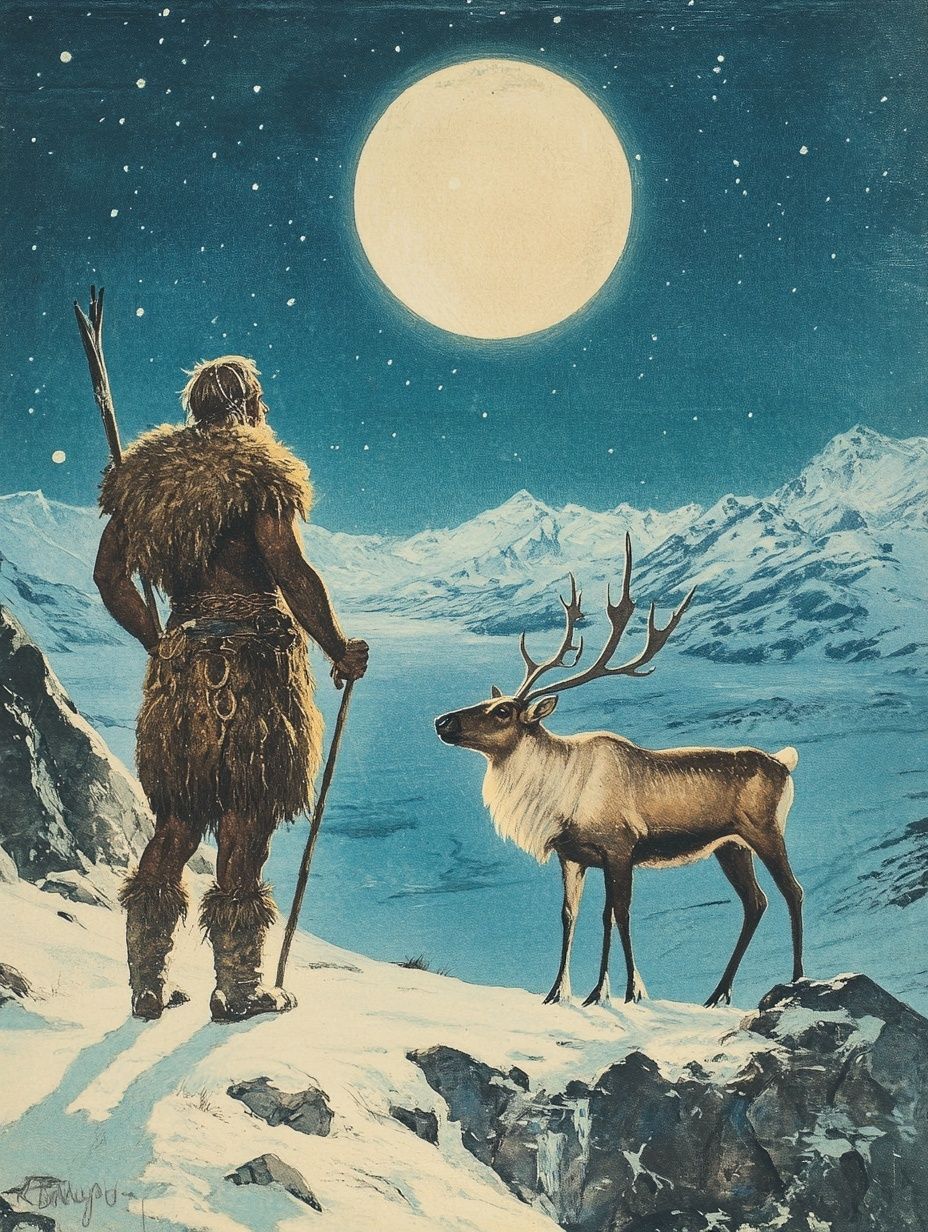
This incredible variety of moon gods and goddesses - figures of light and shadow, hunters and nurturers, cosmic parents and silent watchers - underscores just how universally powerful the moon's influence was. And still is.
The moon's magic isn't confined to male or female, one type of story or one culture but it's amazing how so many stories also end up sharing similarities. Such is the power of folklore and storytelling.
So if you're ever in need for a spark of creativity, take a look at that big glowing round thing in the sky and imagine what our ancestors thought. And how they explained its existence. You'll be amazed at what you can come up with!
Article sources
- Eliade, Mircea. Patterns in Comparative Religion. Translated by Rosemary Sheed. New York: Meridian Books, 1958.
- Frazer, Sir James George. The Golden Bough: A Study in Magic and Religion. Abridged ed. New York: Macmillan, 1922.
- Frankfort, Henri. Ancient Egyptian Religion: An Interpretation. New York: Harper & Row, 1948.
- Kramer, Samuel Noah. Sumerian Mythology: A Study of Spiritual and Literary Achievement in the Third Millennium B.C. Philadelphia: American Philosophical Society, 1944.
- León-Portilla, Miguel. Aztec Thought and Culture: A Study of the Ancient Nahuatl Mind. Translated by Jack Emory Davis. Norman: University of Oklahoma Press, 1963.
- Macdonell, Arthur Anthony. Vedic Mythology. Strassburg: K.J. Trübner, 1897.
- Máchal, Jan. The Mythology of All Races: Celtic and Slavic. Vol. 3. Edited by Louis Herbert Gray. Boston: Marshall Jones Company, 1918.
- Davidson, H.R. Ellis. Gods and Myths of Northern Europe. Baltimore: Penguin Books, 1964.
- Reichard, Gladys A. Navajo Religion: A Study of Symbolism. New York: Pantheon Books, 1950.
- Rose, H.J. A Handbook of Greek Mythology: Including Its Extension to Rome. New York: E.P. Dutton & Co., 1928.
- Rowe, John Howland. "Inca Culture at the Time of the Spanish Conquest." In Handbook of South American Indians, Vol. 2: The Andean Civilizations, edited by Julian H. Steward, 183–330. Washington: U.S. Government Printing Office, 1946.
- Werner, E. T. C. Myths & Legends of China. London: George G. Harrap & Co., 1922.
Shop vintage, digital folklore books about the moon
I spend a lot of time digging through old and out-of-print folklore texts and curate selected titles as digital editions.
I used these 2 books from the late 1800s as part of my research for this article and they're filled with fascinating details and stories only vintage books can bring.
I've given them new covers, tidied and compressed the original scans and repackaged them into a convenient digital download at a great price. Check out these lunar folklore texts here.
(Clicking the link will open the Mythfolks Etsy shop in a new tab.)
You might also like


